- What Is Programmatic Advertising?
- Key Components of Programmatic Advertising You Should Know
- Why Does Programmatic Advertising Matter for FMCG Brands?
- Regional Momentum
- Unique Regional Considerations
- Opportunity for First-Mover FMCG Brands
- FMCG Case: Boosting Reach with Automated Buying
- Example 1: Mogu Mogu Iran
- Results Snapshot
- Example 2: Ramadan Snack Campaign in the Middle East (Lurpak)
- Results Snapshot
- Example 3: Snack Brand Launch via Programmatic Video (Ferrero Rocher Ice Cream)
- Results Snapshot
- What Made Them Work
- Programmatic Advertising Impact on FMCG Brands
- Carrefour UAE: Precision Media & In-Store Smart Targeting
- Talabat: Strong Growth in Grocery + Retail Advertising
- Programmatic Activation through Retail Media
- Why It Matters for FMCG Brands
- Avoiding Waste by Programmatic Advertising: Data-Driven Ad Spend Optimization
- Traditional Ad Buying Challenges
- How Programmatic Solves This
- Efficiency without Sacrificing Scale
- How Lamana Uses Programmatic Advertising for Market Leadership
- Our Approach
- Lamana’s Competitive Edge in MENA
- Smart Reach Is the Future of FMCG Advertising
Consumers in the UAE and across the Middle East are highly connected and digitally aware. As Lamana states, more than 96% of the population in the UAE uses smartphones. For FMCG brands operating in such a mobile-first region, reaching a broad and scattered audience can be challenging.
That is exactly where programmatic advertising comes in. This approach enables FMCG marketers to run targeted, scalable campaigns across multiple platforms, including websites, apps, video platforms, and more by leveraging automation and real-time data. It is completed with no delays and other problems associated with manual purchases.
It is a more innovative, faster way to connect with the region’s audience, who are always online. And above all, it aligns perfectly with the high-volume, low-margin nature of FMCG products. The result is a highly influential marketing approach in the digital-first world.
What Is Programmatic Advertising?
Programmatic advertising is an automated way to buy and place digital ads by means of technology, data, and real-time bidding (RTB). Unlike traditional methods that require direct negotiation with publishers and manual setup, programmatic advertising is executed entirely through advanced platforms in real time. Everything is done in the blink of an eye.
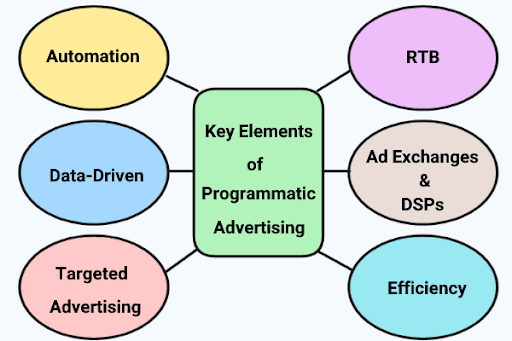
Here is how programmatic advertising works:
- A user visits a website or an application
- An auction takes place in real time
- The winning ad is shown based on the targeting and bid
In an example when a multi-SKU food brand needs scale, programmatic sets audience logic, bids, and creative rotation once-then delivers the right asset to each micro-audience (language, time of day, device) automatically. Lamana marketing agency used a suite of ultra-short pre-rolls and mobile edits for a regional oil brand named "Aftab Oil" to create a learning loop that scaled efficiently without manual trafficking.
Check Aftab Oil Project page on Laman's Agency website.
Key Components of Programmatic Advertising You Should Know
Programmatic advertising relies on four main components that work together to deliver ads automatically, precisely, and in real time.
- Demand-side platforms (DSPs): A software platform that advertisers or agencies use to buy digital ad space automatically across various websites and apps. All you need to do is set your target audience, budget, and goals, and the DSP does the rest; it joins auctions and places your ads without manual effort.
- Real-time bidding (RTB): When someone opens a website or app, a real-time auction happens instantly behind the scenes of programmatic advertising. Advertisers bid for the impression via their DSPs, and the highest bid wins. The whole thing happens in a fraction of a second. It is fast, efficient, and shows that each ad impression is sold to the most relevant bidder. This method is called real-time bidding (RTB).
- Audience targeting: Programmatic platforms do not just target by age and gender. They use rich data to go deeper. They look at users’ online behavior, interests, location, device type, and more. This means you can deliver ads that are genuinely relevant to your audience. For example, a young mom in Dubai might see a different FMCG ad than a college student in Jeddah because the system knows what each one is more likely to engage with.
- Dynamic creative optimization (DCO): This is a compelling feature. DCO technology automatically creates different versions of an ad based on the viewer. Therefore, if someone prefers Arabic, the ad shows up in that language. If it is Ramadan, the visuals might be themed for the season. It even learns over time which versions perform best and adjusts accordingly. This is powered by AI, and it is a great way to personalize messages at scale.
Why Does Programmatic Advertising Matter for FMCG Brands?
Programmatic advertising offers unique advantages for FMCG brands that align perfectly with their marketing needs. This is particularly true in the Middle East and North Africa (MENA), where digital media use is growing rapidly and drawing consumer attention is much more competitive.
Below are the main reasons why programmatic advertising has transformed the way FMCG brands approach marketing.
- Scale and efficiency for high-volume, low-margin products: Brands like Coca-Cola need to reach millions of consumers without overspending. Programmatic advertising automates ad buying and allows Coca-Cola to launch campaigns that reach a massive audience. For example, in 2024, their AI-generated Christmas ad was delivered widely across digital channels.
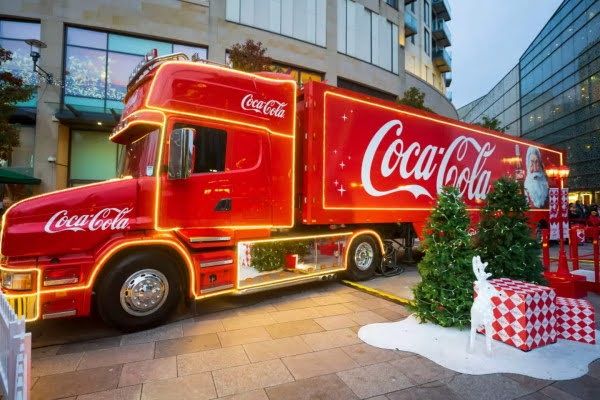
Watch the full video on YouTube
- Targeting specific micro-audiences with personalized messaging: Instead of one generic ad, programmatic allows brands to tailor messages for different groups. For example, in collaboration with its agency Zenith, Kellogg’s used programmatic advertising to deliver targeted ads for its Nutri-Grain breakfast cereal.
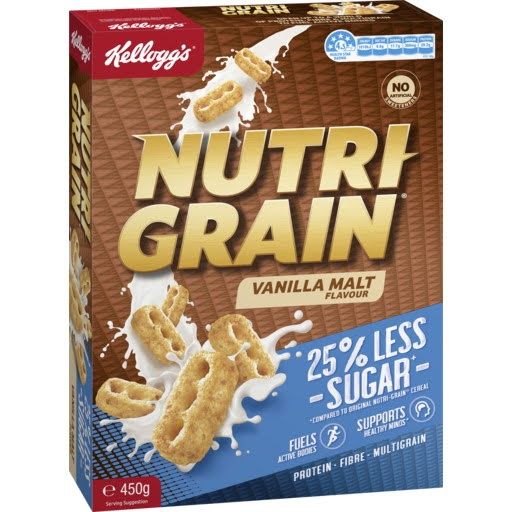
Watch the full video on Instagram
- Maximizing exposure during high-intent micro-moments: Consumers make many buying decisions in brief “micro-moments”, such as searching for product information or finishing a workout. Brands like Gatorade capitalize on this by showing ads at the right time, such as displaying hydration ads on fitness apps immediately after workouts.
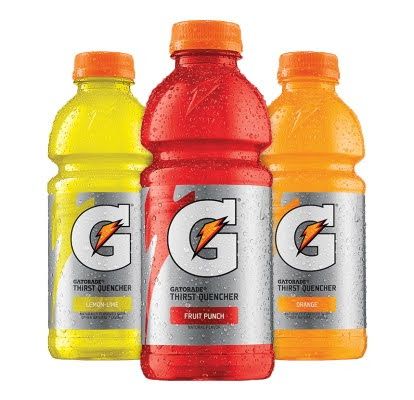
Watch the full video on YouTube
RTB, a major component of programmatic advertising, is experiencing a sharp increase in the Middle East and North Africa (MENA). Therefore, advertisers in the region are shifting toward automated and data-driven strategies. This development signals the beginning of a new era in which brands can connect with their target audience faster, more efficiently, and with great precision.
Regional Momentum
Countries such as Saudi Arabia, the UAE, and Egypt are leading the charge in digital advertising spending. OnAudience states that, for instance, in Saudi Arabia, total advertising spend increased from about $558 million in 2017 to $1.8 billion in 2024, which means over 220% growth.
Similarly, the UAE spent $1.13 billion on digital advertising in 2024, and by 2028, an estimated 76% of that will be programmatic. Egypt, with its young and internet-savvy population, is also expected to reach $1.68 billion in digital ad spend this year.
What is driving this growth? A combination of factors is involved, including internet penetration, high smartphone usage, booming e-commerce, and a regional shift toward digital-first strategies. Local publishers are also joining global ad exchanges, which makes their inventory available for instant purchase via RTB.
For example, according to GDN Life, the UAE’s Khaleej Times recently launched a verified, fraud-free programmatic inventory, showing that even traditional publishers are connecting with programmatic exchanges.
These figures show that brands operating in the MENA region, especially for FMCG brands such as beverages, food, and personal care, can use this new approach to reach a larger audience more quickly and with greater precision.
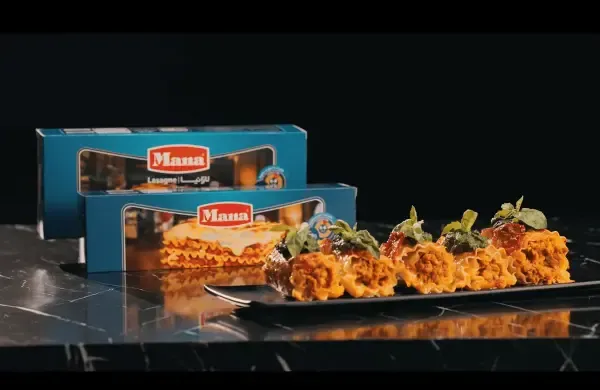
In another example, Laman agency used Concept-driven, no-dialogue edits that ran as mid-/pre-rolls inside popular series; programmatic video then maintained frequency with incremental mobile audiences. Tonality was matched first (cinematic micro-stories), distribution automated next (efficient reach without creative drift), and the results were great for the "Mana" Lasagne brand.
Check Mana Lasagne brand's Project
Unique Regional Considerations
Despite the global nature of programmatic technology, the regional characteristics of the MENA region demand an altered approach. Language is one of the most critical factors. Arabic is the dominant language, but English is widely spoken, especially among youths and professionals. Useful campaigns must be bilingual, not just translated, and messaging should be adapted to the culture and tone of each language group.
As IstiZada notes, a family-focused brand might use emotional Arabic storytelling for local mothers while paying attention to the English content for international Western-educated consumers.
Another defining feature of MENA is its mobile-first behavior. People use smartphones more than anyone else in the world. Additionally, Go-Globe notes that over 90% of users regularly watch digital videos. This makes video ads essential, particularly those that are short-form and mobile-friendly.
Cultural sensitivity also matters. Local traditions, religious values, and social norms must be respected by advertising in MENA. During Ramadan, for example, brands focus on family, spirituality, and appreciation by adjusting their tone, while modifying ad schedules around Iftar. Tools like contextual filters, allowlists, and blocklists are essential for keeping ads away from inappropriate content. In one word you must have a creative design solution and then plan it programmaticaly.
Opportunity for First-Mover FMCG Brands
Many local competitors rely on manual media purchases such as fixed ad placements and TV contracts. Programmatic offers advantages including market agility, campaign testing, and real-time scaling, based on performance.
Brands can react rapidly to real-world events. For example, they can promote ads during Ramadan. First movers can access live data that helps them lead in a fast-changing digital market.
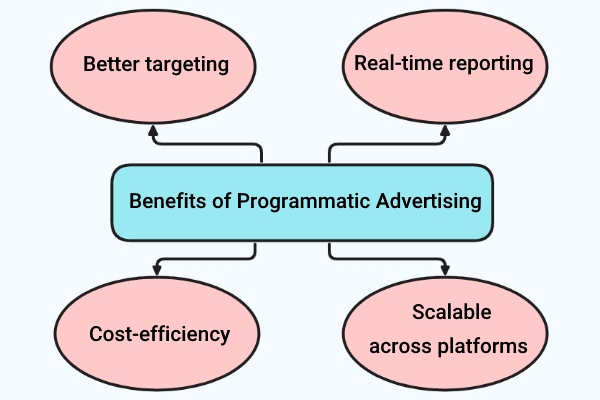
FMCG Case: Boosting Reach with Automated Buying
This section examines how FMCG brands have used programmatic advertising to expand their reach efficiently during a product launch in the UAE. By targeting Gen Z during Ramadan across platforms like YouTube, mobile apps, and Instagram Stories, the brand released personalized and mobile-friendly ads.
Real-time data allowed for on-the-fly optimizations, resulting in lower costs, higher engagement, and better video completion rates. The examples below show how automated ad buying helped the FMCG brands connect with the right audience at the right time, without wasting resources.
Example 1: Mogu Mogu Iran
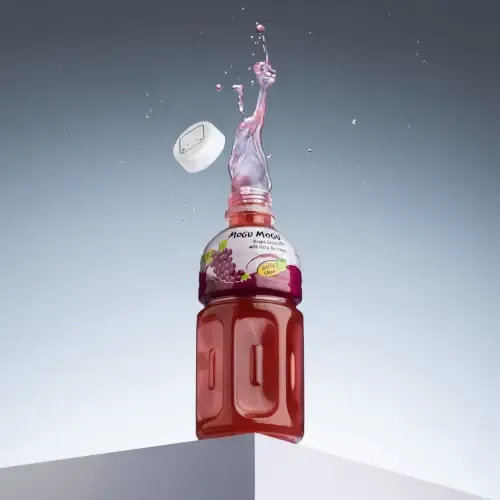
From influence to click-through: Laman digital marketing agency designed a flavors campaign synchronized with creator content (mother-and-child, lifestyle, Gen Z), featuring programmatic pre-roll/display and a bilingual landing page that explains authenticity and variants. Automation handled audience splits and frequency caps, while the landing page captured consideration with clear next steps. The result was great for the Mogu Mogu Iran Campaign.
Results Snapshot
Here is the results which achived at a glance
- Reach: ~20M people across channels during the campaign
- Consideration traffic: 250K+ visitors to the bilingual landing page.
- Creator engine: 88 influencers activated across mother-and-child, lifestyle, and Gen Z segments.
- Distribution scale: Content syndicated across 1,000+ media placements to reinforce “flavor variety” and “authenticity.”
- Brand protection outcome: Campaign messaging contributed to reducing counterfeit confusion in local markets (qualitative impact noted on the project page).
Example 2: Ramadan Snack Campaign in the Middle East (Lurpak)
The first example of increasing brand awareness by programmatic advertising is the Lurpak Ramadan campaign in the Middle East, which was designed to stand out during Ramadan, especially for Iftar. Arla Foods and its agency, PHD MENA, launched a video centered around digital platforms to support the campaign.
The campaign featured a series of Ramadan-themed recipe tutorials in collaboration with popular YouTube cooking influencers, who made the content look more engaging and culturally relevant.
The campaign controlled ad frequency by using programmatic targeting through DoubleClick Bid Manager. So it made the campaign more effective and connected to viewers during special moments.
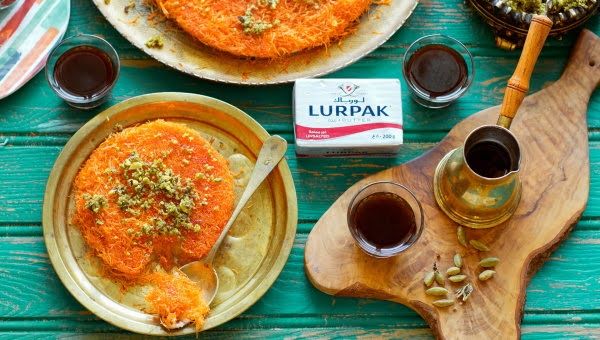
Watch the full video on YouTube
Results Snapshot
The campaign achieved strong results by combining cost efficiency, increased engagement, and improved brand recall through programmatic optimization. As the Arabian Marketer explains, the results were as follows:
- 27% lower cost-per-reach vs. standard pre-roll ads
- 46% lower cost than YouTube ads
- 135% brand lift among targeted male viewers
- 19% overall increase in ad recall
Example 3: Snack Brand Launch via Programmatic Video (Ferrero Rocher Ice Cream)
Ferrero Rocher Ice Cream launched a programmatic video campaign in Europe to build mass awareness and position the product as a premium snack. Ads ran across Connected TV and online video platforms via The Trade Desk.
The campaign leveraged retail data to target ice cream, chocolate, and Ferrero shoppers precisely, ensuring relevant reach.
The result also showed that real-time optimization through the DSP maximized efficiency, while a brand lift study measured improvements in brand perception and consideration.

Results Snapshot
As mentioned by The Trade Desk, the campaign achieved outstanding reach, brand impact, and cost-efficiency by using programmatic tools and data-driven optimization. The results were as follows:
- 50% increase in unique household reach through frequency capping
- 15% lift in ad recall and 33% improvement in brand image
- Above 25% consideration lift and ~21% rise in brand familiarity
- Ranked in the top 5% for ad recall effectiveness
- Doubled media efficiency and reduced cost per unique reach without increasing spend
What Made Them Work
There were three main factors that made these campaigns stand out. They are explained in more detail in the following section.
- They respected local culture. The visuals, themes, and timing were carefully crafted to match the spirit of Ramadan. Ads focused on family, sharing, and celebration, and they mainly appeared during evening hours when people were more relaxed and using their phones.
- They did not treat everyone the same. Teens saw playful, social content. Parents saw messages about quality and value. This type of intelligent audience segmentation meant that each group received content that spoke directly to them.
- They remained flexible. The team had a dashboard that delivered results in real time, which means they could refine messages, recollect budgets, or explore new platforms. This flexibility boosted performance throughout the campaign.
Programmatic Advertising Impact on FMCG Brands
The rise of Retail Media Networks (RMNs) across MENA’s leading grocery retailers has significantly amplified the impact of programmatic advertising for FMCG brands—turning digital impressions into measurable store visits and sales.
Carrefour UAE: Precision Media & In-Store Smart Targeting
In May 2025, Majid Al Futtaim—the operator of Carrefour in the UAE—partnered with Advertima to introduce AI-powered real-time media in Carrefour stores. This system utilizes smart sensors and integrates with Carrefour’s online and app-based platforms to provide programmatic ad placements across both physical and digital environments. FMCG brands can now serve dynamic ads based on real-world shopper behavior and measure conversions directly, such as store footfall and product purchases.
“This rollout sets a new benchmark in retail media, allowing real-time personalization and performance-based targeting at the shelf.” — Majid Al Futtaim Official Press Release, May 2025
Talabat: Strong Growth in Grocery + Retail Advertising
According to Talabat’s 2024 earnings release, the company reported a 47% year-over-year increase in Grocery & Retail (G&R) Gross Merchandise Value (GMV), reaching USD 1.9 billion. The growth is partly driven by the adoption of in-app promotions and targeted product placements by FMCG brands across Talabat’s delivery platform.
“We’ve seen strong momentum in our G&R vertical. More brands are leveraging our platform not just for fulfillment but for advertising directly to our 5+ million monthly users.” — Zawya Coverage of Talabat Results, 2024
Additionally, Talabat's integration of InstaShop (acquired in Q1 2025) gives brands access to real-time purchase behavior and programmatic options within a last-mile grocery network that spans the GCC.
Programmatic Activation through Retail Media
FMCG brands are increasingly leveraging retailer-owned digital properties for programmatic campaigns, commonly referred to as retail media networks. These platforms allow brands to:
- Serve personalized product ads across retailer websites, mobile apps, and in-store screens.
- Access first-party purchase data to segment audiences based on past buying behavior.
- Measure closed-loop attribution from ad views to purchases, even in physical stores.
Retailers such as Carrefour, Talabat, and soon Lulu Hypermarket are pioneering this shift in the MENA region. Although Lulu’s retail media data is not yet publicly available, market analysts anticipate a shift toward RMN investments similar to those in Western markets.
Why It Matters for FMCG Brands
This new wave of programmatic retail media is a game-changer for FMCG advertisers. It enables:
- Smarter targeting across high-intent, purchase-driven environments.
- Real-time personalization based on real consumer behavior, not assumptions.
- Clearer ROI through closed-loop measurement—from impression to shelf.
As retail media networks expand across MENA, FMCG brands that integrate programmatic buying within these environments will gain a distinct competitive edge, turning grocery touchpoints into precision-driven, performance-led opportunities.
Avoiding Waste by Programmatic Advertising: Data-Driven Ad Spend Optimization
Programmatic advertising reduces required ad spend by using data in real time and targeting the right audience with greater precision. It ensures that ads are shown to people who are more likely to engage. Therefore, campaigns become more efficient and cost-effective.
Traditional Ad Buying Challenges
Traditional buying methods, such as TV, print, or direct online deals, faced significant limitations and challenges in a data-driven marketing landscape. These outdated strategies often result in wasted resources, ineffective audience targeting, and inefficient budget allocation across platforms.
Because they lack real-time insights and flexibility, advertisers can end up spending a lot without reaching the right people or achieving high returns. Together, these issues reduce the return on investment and overall campaign performance.
How Programmatic Solves This
Traditional advertising often wastes money by showing ads to the wrong people, at the wrong time, or too frequently. Programmatic advertising solves this by using automation and real-time technology. It allows marketers to target audiences and test what works for them. It also avoids repetition and saves budget, resulting in better options. The following shows the ways that programmatic advertising helps you spend smarter:
- Real-time control over who sees your ad, when, and where: Programmatic lets advertisers set detailed rules about who sees the ad, such as age, interests, or location; Great for 360 marketing strategy. It also identifies when they see it (daytime, evenings, weekends), and whether they see it on specific apps or websites. Take a coffee brand as an example. It might show morning ads on news apps in Dubai, while targeting late-night snackers on YouTube in Cairo after 9 PM.
- A/B testing of creatives and formats: You can test different headlines, images, or formats, and the platform will automatically favor the ones with better results. It pauses underperforming ads to avoid wasting money. For instance, a chocolate brand tests two ads, one showing a romantic gift and another showing a family occasion. The system detects higher clicks on the family version and shifts the budget immediately.
- Frequency capping to reduce ad fatigue: As mentioned in the ConsulTV, you can see how often a person sees your ad through programmatic platforms. If a person sees the same ad repeatedly, they may become annoyed. Frequency capping prevents this and ensures the budget is not wasted on repetitive impressions. For example, when a soft drink brand limits ads to 3 times a day during Ramadan evenings, users do not feel overwhelmed.
- Predictive modeling to shift spend to high-performing channels: Programmatic advertising can predict which channels or audiences are more likely to engage by using AI and previous data. Then, they shift the budget toward what works best. For example, a snack company achieves better results from users of its recipe app than from users of its gaming app. The system automatically increases bids for ad slots on recipe platforms without waiting for human confirmation.
Efficiency without Sacrificing Scale
One of the advantages of programmatic advertising for FMCG brands is that they can advertise on a large scale while remaining cost-efficient and productive. FMCG campaigns with broad audiences but low-profit margins need this kind of advertising to deliver personalized messages to different segments of the audience.
This means FMCG brands can reach a large audience, much like TV ads, but at a lower cost and without wasting budget on users who are not interested in the product. For example, a beverage brand can show sports ads to young adults while delivering family-oriented messages to parents.

How Lamana Uses Programmatic Advertising for Market Leadership
Lamana leads the digital advertising space in MENA by combining cultural insights with professional strategies. They use a data-driven approach from the first stage and conduct audience research to inform every campaign. Lamana helps brands reach the right consumers by creating personalized ad formats, cross-channel integration, and real-time reporting. Therefore, it builds audience engagement, brand awareness, and market growth.
Our Approach
Lamana’s approach in MENA is deeply data-driven and culturally informed. It conducts audience research and analyzes retail behavior before launching campaigns. The entire goal is to create targeted strategies.
They use advanced tools like DCO to serve personalized ads based on user data, mobile video ads for increased engagement, and geofencing to link digital ads to in-store visits directly. For example, a user near a store might see an ad with a map and promo for that location, while another user finds a different message better suited to their interests.
On the other hand, mobile video lets Lamana reach on-the-go audiences with engaging storytelling formatted for smartphones, which is an important tactic in the mobile-first MENA region.
In the following section, we will explore the four core pillars of Lamana’s programmatic ad strategy that have driven measurable success for FMCG brands:
- Insight-led strategy: Lamana bases its campaigns on deep audience research and retail data to create targeted, evidence-based advertising strategies rather than relying on guesswork.
- Custom programmatic mixes: They use a variety of ad formats, including dynamic creative optimization banners, mobile video ads, and geo-fenced campaigns to deliver personalized and location-relevant content.
- Cross-channel syncing: Lamana integrates programmatic advertising with social media, CRM, and offline marketing efforts to create a consistent brand experience across all channels.
- Transparent reporting dashboards: People gain real-time access to detailed campaign performance data through dashboards. By this approach, they will achieve ongoing monitoring and optimization with complete transparency.

Lamana’s Competitive Edge in MENA
Lamana programmatic advertising has been effectively approved in driving results for FMCG brands. For example, in early 2025, Lamana collaborated with the Mogu Mogu to launch a multi-layered campaign that focused on the sensory and visual experience of the drink. The campaign achieved over 5 million impressions, a 4.5% click-through rate, and almost 2 million YouTube views by using dynamic and programmatic strategies.
Similarly, Aftab Oil’s saffron-focused campaign boosted brand visibility and consumer engagement through precise programmatic targeting.
Another campaign for a pasta brand increased brand awareness and encouraged daily use by delivering personalized content across channels. These cases highlight Lamana’s ability to combine data-driven tactics and creative execution to maximize reach, engagement, and brand recall efficiency.
You can explore their work further on their project page, Lamana Projects, where they showcase campaigns highlighting brand engagement and visibility achieved through data-driven programmatic advertising strategies.
Smart Reach Is the Future of FMCG Advertising
In a fast-paced and competitive market, particularly in regions such as the Middle East, consumers are constantly online and have many choices. Therefore, repeating ads is not enough. Brands need to be precise with their messaging and show the right ad to the right person at the right time.
Programmatic advertising is not just about saving money; it is about spending it wisely. It helps FMCG brands move faster, work more efficiently, and remain relevant to different groups of consumers across the region.
Suppose you want to make your advertising more creative and data-driven rather than relying on guesswork. In that case, Lamana can help you bring automation and intelligence to your processes. Let’s make your next campaign unstoppable.
